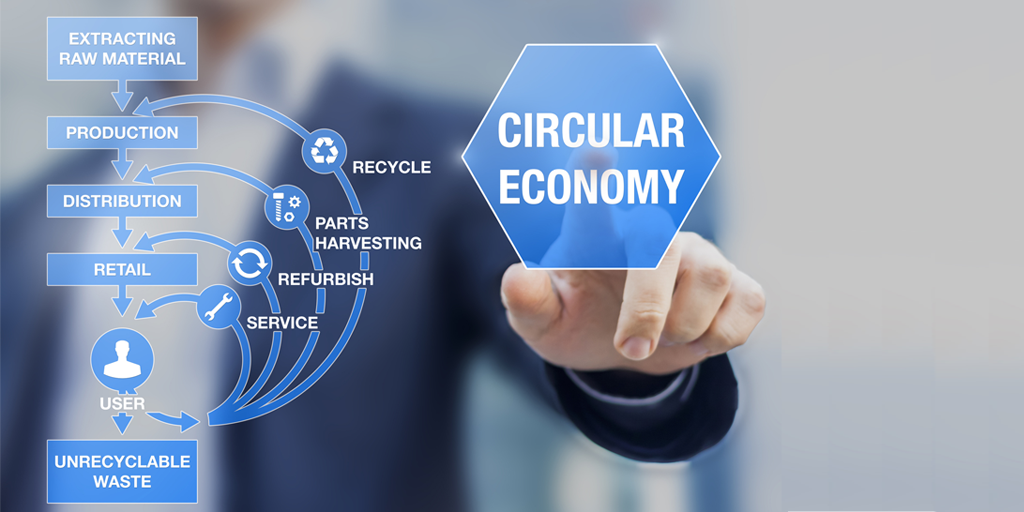Whereas a linear economic model leads to inevitable wastage and inefficiencies, a circular one provides the opportunity to reuse resources again.
However, it is not just big corporations that will feel the benefits of a circular economy – everyone involved will, including consumers.
A circular economy will mean consumers can return their goods to a retailer for repairs or refurbishments. In turn, spares can be ordered by repairers from wholesalers to extend the life of products.
Smaller enterprises are particularly adept at this sort of reactive work where a close focus on customer service is what is needed for the circular nature of these processes to function.
At the end of a product’s life, too, smaller enterprises have their role to play. This might be in salvaging the serviceable parts of a product so they can be used to repair others.
It might also mean focusing on recycling the materials within a product so that fewer global resources are needed to make new products. How does this greener and economically more sustainable model of commerce provide opportunities for small and medium-sized enterprises (SMEs)?
Read on to find out.
Circular Economy & Opportunities For Small Businesses

1. Recovering Resources
It may sound like a niche operation, but SMEs are increasingly looking at their own resources to find ways they can be used again and again.
In some cases, this might come down to operational changes that require fewer items to be used or energy consumption to be as high as it previously was. By pushing down on material usage, so the overall cost of providing a good or a service to a client will drop.
Although not significant on their own, multiple resource recovery approaches repeated often enough can make considerable cost savings, ideas that can then be sold into other organizations through consultative services.
2. Circulating Supplies
To put it simply, circulating supplies means avoiding items ending up in landfill sites at the end of their lives.
It could be that materials are chosen specifically because they can be drawn from recycled supplies and that they can be recycled once their current useful existence has come to an end.
There again, the use of biodegradable materials might be favored when no recycling is feasible. This economic approach is not just about ‘greening a brand’ but of putting a supply chain on a sustainable footing that won’t face interruptions due to the greater level of predictability that comes from re-circulating supply models.

3. Platform Sharing
This is something that all SMEs can do very well because their set-up should be about offering clientele exactly what they want rather than providing a one-size-fits-all approach that so many big corporations have to do.
In short, platform sharing means offering your clients a share of your product or service so that their cost is reduced and your assets’ income potential are maximized. This might mean renting your equipment and expertise to one client in the summer and another in the winter, for example.
Often SMEs will work as a go-between to make such relationships work cooperatively from a procurement point of view. Many internet platforms already exist for this purpose – matching clients with service providers at a time and place that suits them.
4. Extending the Lifespan of Products
The circular economy is all about sustainability and nothing is more sustainable than using a resource to its maximum potential. For products, this means ensuring that consumers enjoy them for as long as possible without incentivizing them to throw them away to buy again.
Upgrades, repairs and extended warranties all have their part to play in this business model. SMEs can re-market items that have been refurbished and even to remake them into new products adapted from old ones to appeal to changing consumer demands.
The aftermarket in consumer electronics is just one area where you can see products enjoying extended life cycles nowadays but there are many others.
After all, second-hand car dealers who tune up engines have been operating in this manner for many decades. SME owners merely need to adapt the model to their chosen sector to enjoy commercial success.
In Summary
The circular economic model is already in place in many sectors, albeit partially. In time, this model will bed itself into nearly every sector as all businesses realize they have to do more to be sustainable in the long-term.
This means that smaller enterprises and even individual entrepreneurs have a chance to start filling some of the gaps in the marketplace and provide the sort of services outlined above.
There are some recurring income streams to be gained by the early adoption of these business models and smaller, nimbler enterprises are best placed to make them a reality.
You May Like To Read:
- 10 Green Business Ideas For Entrepreneurs
- 5 Profitable Green Product Ideas to Private Label & Sell on Amazon
- Eco-Friendly Printing: A New Marketing Strategy for Business
Author Bio: This article was written by Daniel Santry of Wisetek. Daniel is an expert in the circular economy and the opportunities it presents to small businesses.














